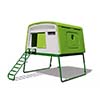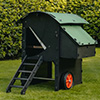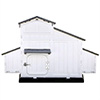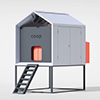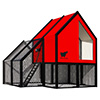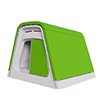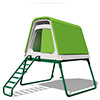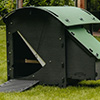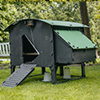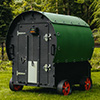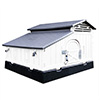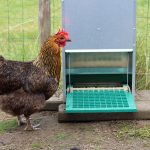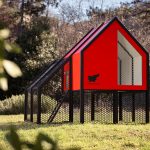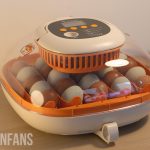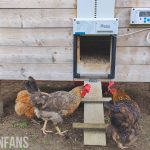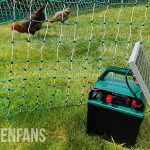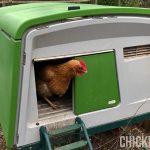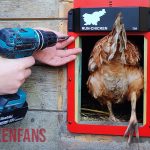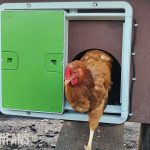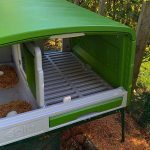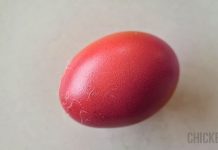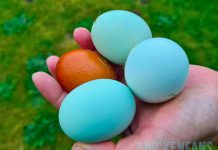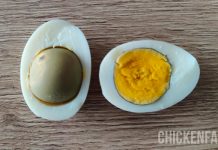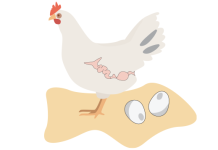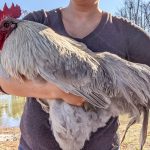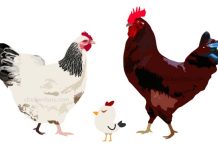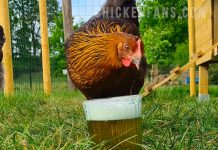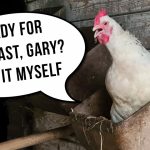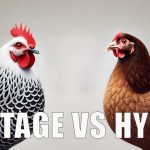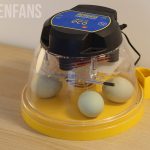Best Plastic Chicken Coops (2024)
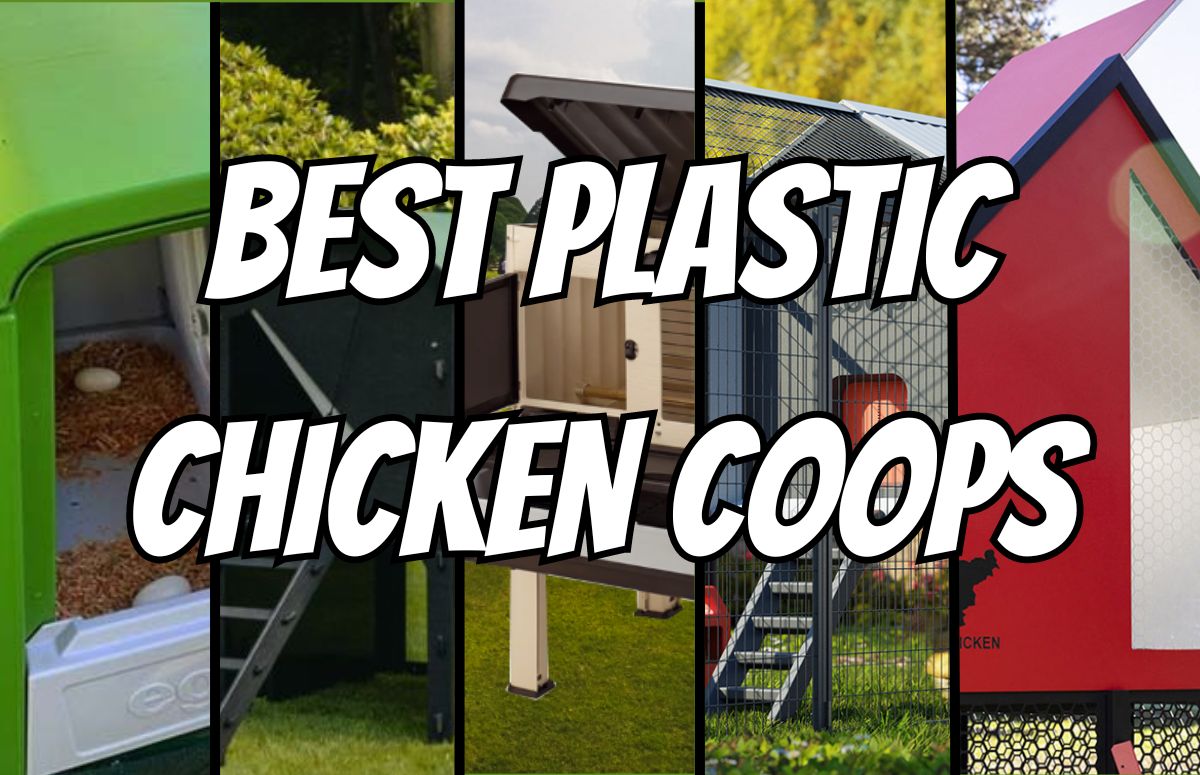
Chicken Fans is reader-supported. When you buy through our links, we may earn a commission. Learn more about our privacy policy and disclaimer.
Traditionally, most chicken keepers choose a wooden chicken coop, but there are many benefits to choosing a plastic one instead. Let’s talk about the pros and cons of plastic coops and which ones are the best value for money.
Best Non-Wooden Chicken Coops:
- Best Overall: Omlet Chicken Coop
- Best Eco-Friendly: Nestera Chicken Coop
- Best Traditional-Looking: Snap Lock
- Best Smart Plastic Coop: SMART Coop
- Non-Plastic-Non-Wooden coop: Run Chicken VILLA
Our selection of the best plastic chicken coops is divided into five categories, with the overall winner being the Omlet coop due to its high quality and versatility.
The Nestera coop is a popular brand of eco-friendly chicken coops with almost zero-waste production, while the Snap Lock coop is designed to resemble traditional wooden coops, providing the benefits of plastic coops with a more traditional look.
Next to that, we have the SMART coop, equipped with cameras and an automatic coop door which can be operated by using an app. You can watch your chickens on your phone!
Lastly, we added a non-plastic coop, which has a notable mention on this list: the Run Chicken Villa, an aluminum chicken coop with a built-in automatic coop door, feeders, and nesting boxes.
Let’s go over them one by one so you can make up for yourself which chicken coop suits you best.
1. Best Overall: Omlet Chicken Coop
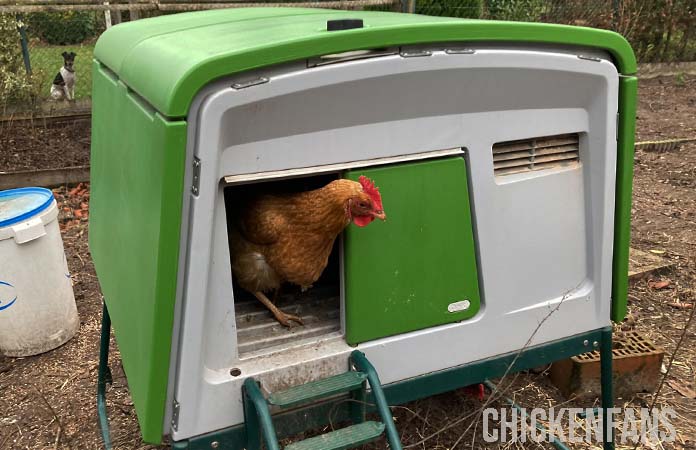
Omlet is a well-known brand in the pet industry that offers a wide range of products for various animals, such as cats, dogs, chickens, and more. They have three types of chicken coops:
- The Omlet Eglu Cube: their largest coop that can accommodate up to 10 bantams or 6 large chickens
- The Eglu Go and Eglu Go Up: smaller coops suitable for housing up to 4 chickens
Overview
All Omlet chicken coops look recognizable; whether you like it, this can be a pro or a con. The coops are made from sturdy (thermo)plastic materials like ABS or polyethylene and are built to last, according to the manufacturer. Each Omlet Coop has a lifespan of 10 to 15 years.
All Omlet Cubes are double-walled, so the body heat of your chickens keeps the coop warmer during winter without escaping through the walls. This system and the ventilation will keep your hens cool during summer.
What is the Difference Between the Omlet Eglu Cube and the Omlet Go (Up)?
At this moment, Omlet sells three types of chicken coops.
- The Omlet Eglu Cube: Their largest coop, accommodating up to 10 chickens, with a separate nesting area and ladder for easy access.
- The Omlet Eglu Go: A perfect chicken coop for beginners, accommodating up to 4 chickens. Needs to be positioned on the ground.
- The Omlet Eglu Go Up: The same coop as the Omlet Eglu Go, but with a convenient raised height, so you won’t need to bend down to get the eggs.
Best Features
The primary function of a high-quality chicken coop is to provide a safe environment for your hens to rest and lay eggs. Your chickens won’t use the coop during the day, only the nesting boxes, and don’t typically spend time in the coop.
There are several specific features of this coop worth mentioning. Let’s explore them one by one.
All Omlet Coops, including the Omlet Go and Omlet Cube have the following features:
- Easy to Clean: A plastic coop can be easily hosed and dried in the open air. Many parts are removable for easy cleaning.
- No Paint or Primer needed: Wooden chicken coops must be protected from the elements with oil, primer, or paint. This unpleasant task must be repeated yearly. The Omlet UV-protected plastic coops don’t need any maintenance.
- Unique Wall Insulation: Keeps your chickens warm during winter and cool during summer.
- Draft-Free Ventilation: Always keeps fresh air circulating in the coop without blowing directly over the roosting and nesting area.
- Direct Access to Nesting Box: Collect fresh eggs each morning by using the back door in the Omlet Go coops and the ‘eggport’ in the Omlet Eglu Cube.
- Removable Dropping Tray: All chicken droppings fall onto the tray underneath the roosting bars. This tray can be easily removed, emptied, and cleaned.
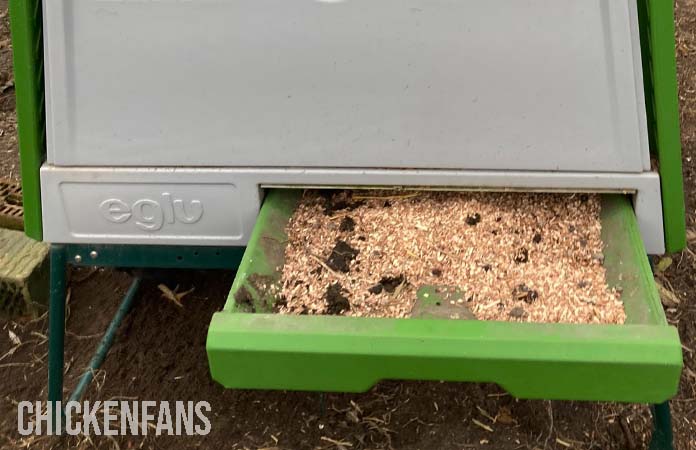
Possible Drawbacks
Omlet has proven to be a reliable partner in the chicken-keeping business over the years, but that doesn’t mean everybody will like their products. Depending on your preferences, some of the features of Omlet’s chicken coops may be noteworthy.
- Remarkable Design: Omlet coops have an unusual appearance; you like them or not. The colors and style are pretty unique and not for everybody’s taste.
- Expensive: Omlet chicken coops are not cheap. Yes, you’ll get a high-quality chicken coop that lasts up to 15 years, but only you can decide whether it’s worth spending the money or not.
- Not for Large Flocks: Omlet claims their large coop, the Eglu Cube, can house up to 10 chickens, but this is only when keeping small chickens or bantams. If you keep medium-sized chickens like Leghorns, the maximum capacity of the Eglu Cube is 8, and for big breeds like Orpingtons, it is only 6.
- Many Accessories are Optional: Although the Omlet coop is expensive, many accessories are not included in the price and have to be purchased separately.
How Did We Test?
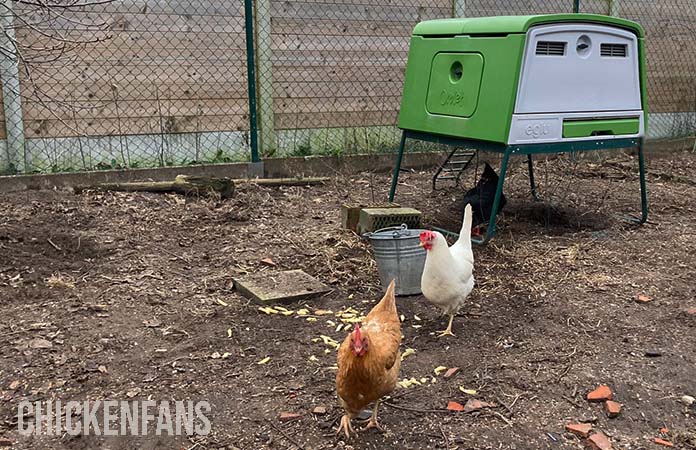
As third-generation chicken keepers, we know the importance of a high-quality, reliable chicken coop. Like most people, we used to prefer traditional wooden chicken coops made with leftover timber.
While we still encourage people to make their own coops, which is why we offer free DIY chicken coop plans, we recognize that some may lack the skills or time to build a coop from scratch.
That said, pre-assembled traditional wooden chicken coops are expensive. Depending on the size, you could spend anywhere from a few hundred dollars to several thousand dollars.
A wooden coop may look sturdy and long-lasting but requires frequent maintenance. An annual paint job is necessary to protect the wood. Next to that, wood will eventually rot and deteriorate over time.
This is why we decided to spend the dollars on a quality plastic coop to see if it’s worth the money. If you want to read our full in-depth review of our Omlet Eglu Cube chicken coop, go to our article, ‘Is the Omlet Eglu Cube Worth the Money? Chicken Coop Review‘.
Bottom Line
The Omlet Chicken coops are voted our ‘Best Overall’ in this list of best plastic chicken coops due to their excellent value for money. Although these coops are not cheap, they offer many qualities and will save you plenty of time over the years. The fact that these coops are designed and manufactured by chicken keepers for chicken keepers is evident in their quality.
→ Read our full review of the Omlet Eglu to learn more about this chicken coop
→ Read our full review of the Omlet Auto Door to learn more about their automatic chicken coop door
2. Best Eco-Friendly: Nestera Chicken Coops
Nestera is a UK company founded in 2020. Their main objective is to create plastic chicken coops made from 100% recyclable plastic without creating waste during manufacturing. As a result, developing a Nestera chicken coop is an almost zero-waste production process.
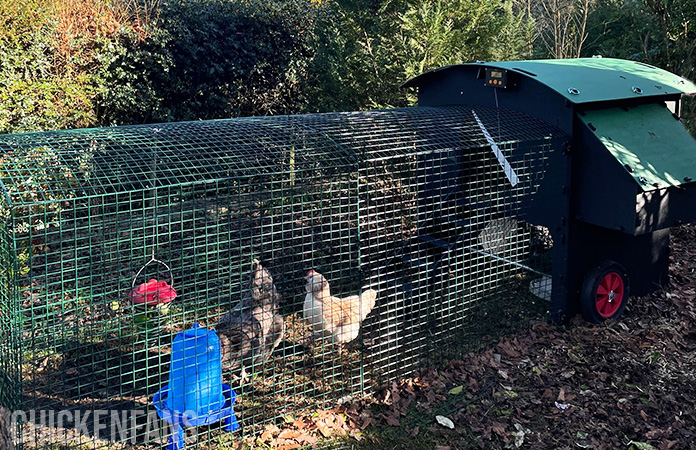
Overview
All Nestera chicken coops have a very recognizable look. They don’t have a flashy color, like the Omlet coops, but the style is remarkable. All Nestera coops have black walls and a green roof.
According to the manufacturer, these Nestera chicken coops are built to last and won’t degrade over time. To prove that, they offer an astonishing 25-years warranty for all their chicken coops.
What is the Difference Between Nestera Coops?
Nestera has ten chicken coops on the market, three different coop styles, each with three different sizes, and one large chicken wagon.
- Ground Model: Available in Small, Medium, and Large
- Lodge Model: Available in Small, Medium, and Large
- Raised Model: Available in Small, Medium, and Large
- Chicken Wagon: Their largest chicken coop.
To make you decide which chicken coop suits you best, Nestera created a convenient ‘Chicken Coop Comparison Chart‘. This will help you decide which coop is best to satisfy your needs.
Ground Model
The Nestera ground model is the ideal starter model for anyone new to chicken-keeping. The coop entry is located at ground level, which is convenient for broody hens, small breeds, or chicks.
Like all Nestera coops, this model is available in three sizes: small, medium, and large. The small coop houses up to three chickens, the medium up to 5 chickens, and the large coop can accommodate up to eight chickens.
The ground model has one (S) or two (M & L) roosting perches, separate nesting boxes (one for the small model and two for the medium and large), and a litter tray. It does not have an outdoor rain or wind shelter, nor is it compatible with the wheel set. It is not a movable coop.
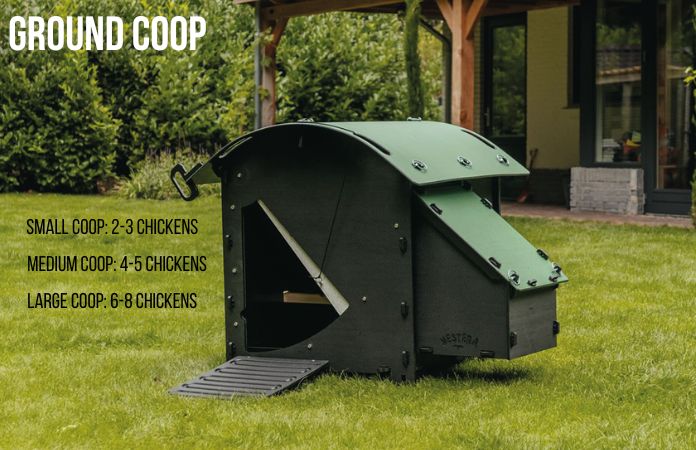
Lodge Model
The Nestera Lodge model is an elevated coop, 8.9″ off the ground, with a ladder so your hens can easily access the coop. It isn’t bigger than the ground model; the only difference is that it is elevated from the ground.
This model is also available in three sizes: small, medium, and large. The small coop houses up to three chickens, the medium up to 5 chickens, and the large coop can accommodate up to eight chickens.
As this coop is elevated, it provides a rain shelter for your chickens, who can stand under the coop during heavy rainfall. The Lodge model is also not compatible with the wheel set.
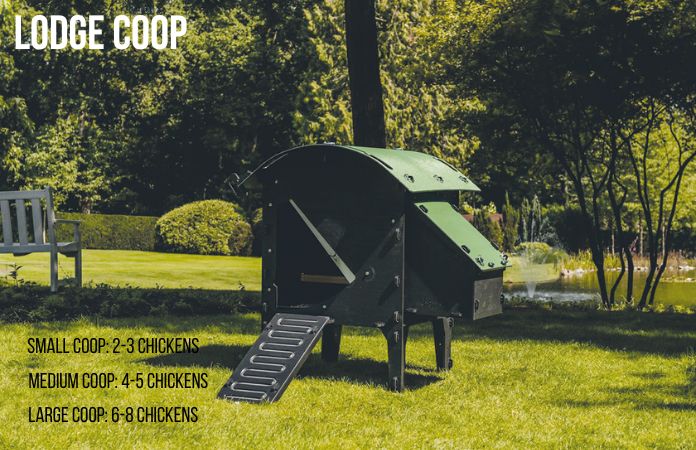
Raised Model
The raised model is an elevated chicken coop, elevated 17.7″ off the ground, and the option to purchase additional wheels to make the coop portable.
The additional space under the raised coop can be used for feeding, allowing your hens to take shelter from heavy rainfall and strong winds.
This model is also available in three sizes, small, medium, and large, housing three to eight chickens.
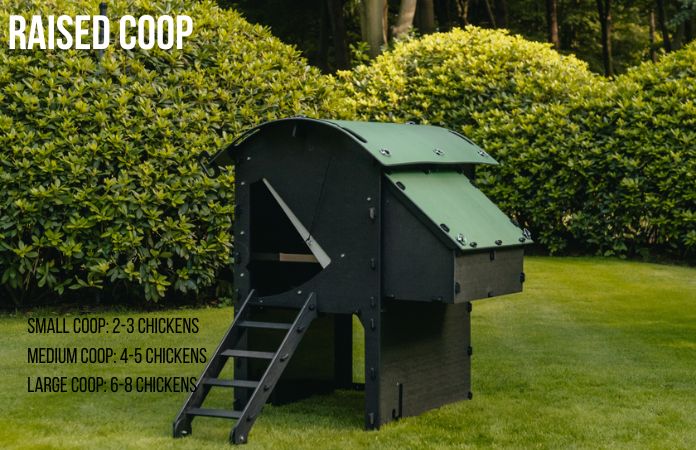
Chicken Wagon
The Nestera chicken wagon is the most recent and largest chicken coop and is inspired by the American Wild West.
Positioned on four wheels, one person can easily move the Wagon, while its full-height front door allows convenient cleaning access. The chicken wagon comes in only one size and can house up to 8 large chickens or 15 bantams.
Differing from the other coops in the Nestera collection, the chicken wagon has concealed ventilation ridges along the front and back of the roofline. This permits a steady flow of air throughout the coop, well above the heads of your chickens.
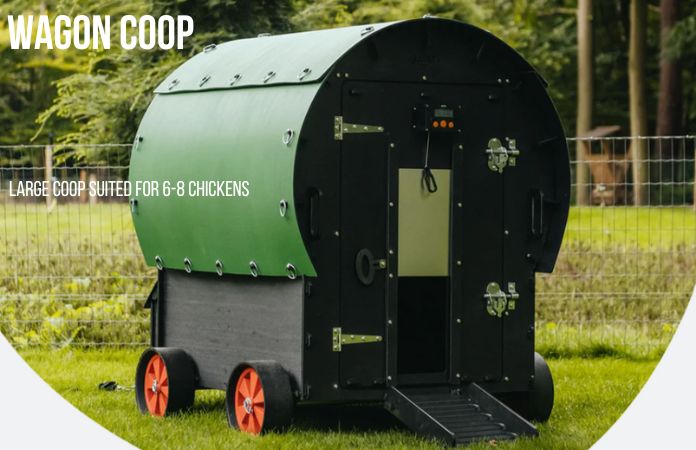
Best Features
All Nestera chicken coops are high in quality and will provide your hens with a safe sleep and nesting area. But there are numerous specific features worth mentioning about these eco-friendly chicken coops.
- 100% Recyclable: Not only are all Nestera coops made from 100% recycled plastic, but they can also be fully recycled after use, unlike most other plastic chicken coops.
- Near Zero-Waste Manufacturing Process: Any waste is collected and recycled during every step of the manufacturing process. All coops are packed in recycled cardboard packaging.
- 25-Year Warranty: The company trusts they made a product that will last a lifetime. That’s why all coops have a 25-year warranty.
- Easy to Clean: These coops are quick-drying and easy to clean. Simply use a hose or pressure water to remove all dirt.
- Low in Maintenance: Plastic coops don’t require constant upkeep like wooden coops. No need to paint or primer the chicken coop yearly, saving you time and money.
- Year-Round Comfort: The coop is resistant to all weather conditions. During winter, the inside temperature will be similar to the outside temperature. The UV-resistant roof reflects the sun’s heat to keep your chickens cool during summer.
- Modular Design: All Nestera coops have a modular design that can be taken apart and reassembled in minutes for deep cleaning.
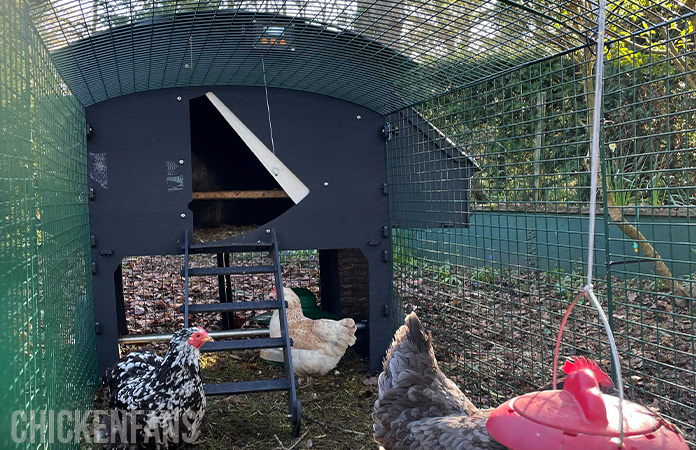
Potential Drawbacks
As Nestera is quite new to the chicken-keeping business, especially in the US, it hasn’t proven to be a dependable partner yet. But their products are all high in quality and made by chicken keepers with knowledge.
However, we should address some potential drawbacks of these plastic chicken coops.
- Design: The Nestera chicken coops have a remarkable design and don’t look like traditional wooden coops. This may be a disadvantage if you don’t like the look.
- Price: The Nestera coops are cheaper than Omlet coops but remain an investment. Nestera offers a 30-day no-questions-asked return policy if you’re unhappy with your purchase.
- Not for Large Flocks: The largest Nestera coops can house up to 8 chickens or 15 bantams for the Wagon.
Bottom Line
Nestera is a fairly new company that recently started selling its product in the US. They make a difference by selling a 100% eco-friendly chicken coop, made from recycled materials and is also recyclable after use. The company is very sure of the quality they provide and gives 25 years (!) of warranty with each coop purchase.
3. Best Traditional Looking: Snap Lock
Plastic chicken coops often get a bad reputation for their appearance, causing some chicken keepers to opt for traditional wooden coops instead. They mostly don’t look anything like traditional wooden coops and don’t blend in with the countryside. This is where Snap Lock makes a difference!
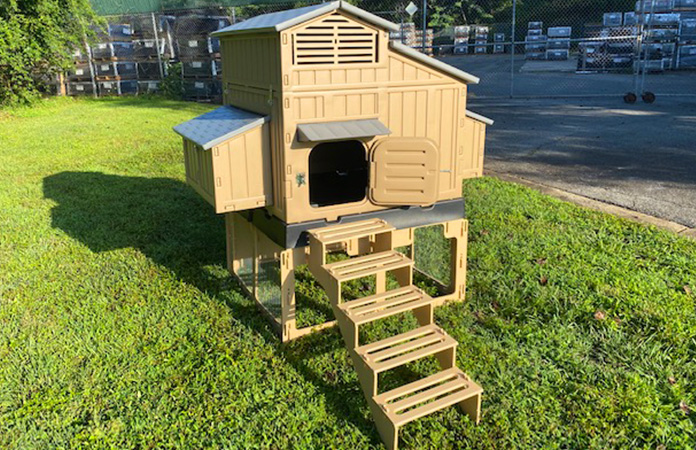
Snap Lock has created two types of plastic chicken coops that look like traditional wooden ones, making them a great choice for those who want the best of both worlds. That’s why we voted them ‘Best Traditional Looking’ plastic coop.
Overview
Snap Lock offers two chicken coop models, a standard and a big coop, both made in the USA and distributed by various dealerships nationwide.
The coops are constructed from Formex, a thermoplastic material recognized for its insulating properties. The plastic of the coops is designed to resemble a wood texture. This makes the plastic coop look more like a traditional wooden chicken coop, which can be an advantage if you’re not fond of the look of most plastic chicken coops.
It even resembles a kid’s playhouse you often see in backyards, but without the flashy color.
What is the Difference Between the Standard and Big Chicken Coop?
Depending on the size of your flock, you can choose a standard model or the big chicken coop. Both look similar and are made from the same materials, but some differences exist.
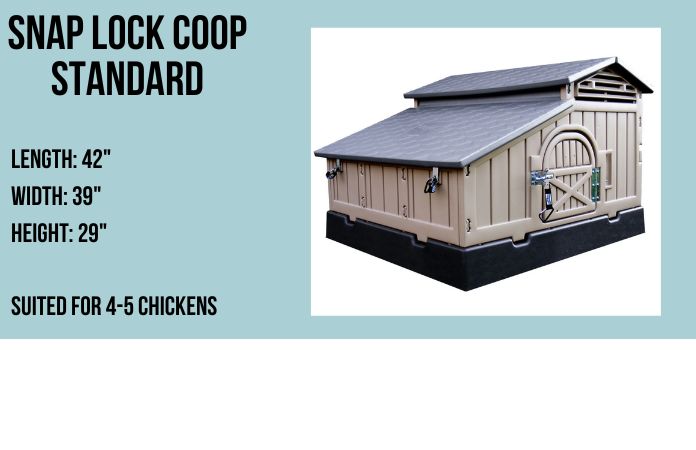
- Standard Formex Coop: Houses up to 4 medium-sized chickens or up to 6 bantams. Includes 3 nesting boxes and 35″ of roosting space.
- Big Formex Coop: Houses up to 8 medium-sized chickens or 10 bantams. Includes 4 nesting boxes and a total of 108″ roosting space.
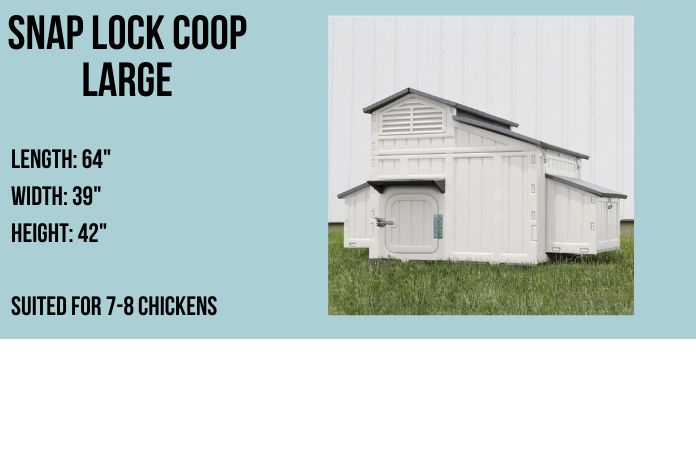
Best Features
Snap Lock chicken coops have many qualities and are built with low maintenance in mind. But there are many things to highlight about these plastic chicken coops.
- Easy to Clean: A plastic coop can be easily hosed and dried in the open air. Some parts can be separated for a more thorough clean.
- Removable Litter Tray: The sliding and removable litter tray makes cleaning up chicken poop a breeze. Slide out the tray, dispose (or compost) the waste, and simply hose it down before placing it back.
- Adjustable Ventilation: The adjustable vents allow air to flow freely and minimize ammonia fumes inside the coop.
- Double Wall-Insulation: The insulating double-wall keeps your chickens warm during cold nights.
- Predator-Proof: All coop openings or doors can be completely locked at night with the included carabiners and locks.
- Easy Assembly: No tools required. You only need a screwdriver to attach the roosting poles, which can be done from the outside.
- Easy Egg Access: The nesting box area is easily reachable from outside.
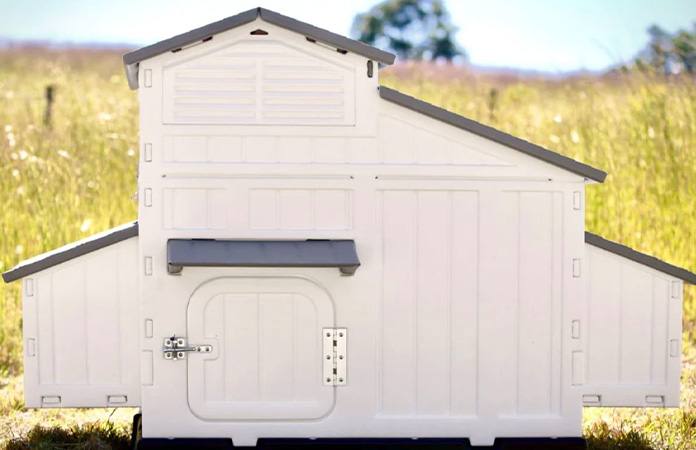
Potential Drawbacks
Although the Snap Lock plastic chicken coop has many good qualities, there are some things to keep in mind before completing your purchase.
- No Elevated Chicken Coops: Both Snap Lock coops are ground models, meaning you can not use the space under the chicken coop for shelter or shade.
- Not as easily reassembled: The design can not be taken apart as easily as the Nestera coops.
- Warranty Information: Because third parties mainly sell the Snap Lock coops, be sure to check the warranty before checkout, as they can differ.
Bottom Line
The Snap Lock chicken coops are made from UV-resistant, lightweight, double-walled Polyethylene. They differ from other plastic chicken coops in this list because they resemble traditional wooden coops.
This is a big benefit if you are not fond of the look of the other plastic chicken coops. With the Snap Lock coop, you’ll get a high-quality plastic coop that can house up to 8 chickens.
4. Best Smart Plastic Chicken Coop: SMART Coop
In the ever-evolving world of smart technology, the Smart Coop takes center stage as the first-ever intelligent coop designed for easy chicken keeping. It’s suited for 4 to 6 chickens.
Tailored for everyone. From rookie chicken keepers to small-scale farmers and seasoned chicken keepers, this coop promises top-notch protection and convenience.
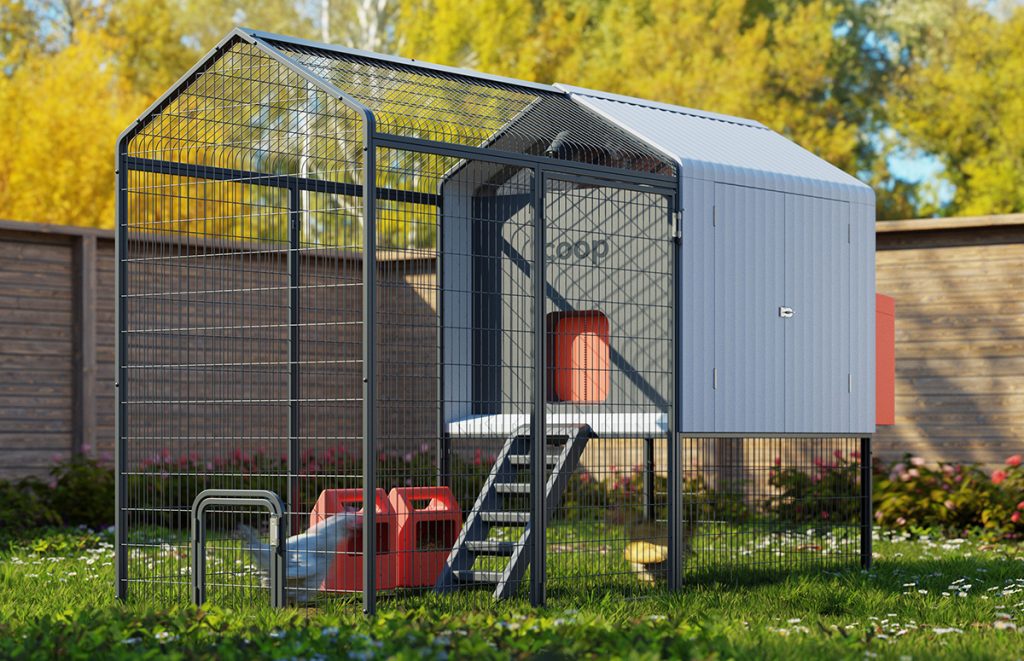
The Smart Coop can be purchased with or without the additional run. It has an elevated base of welded steel, a pre-installed automatic door, two nesting boxes, a detachable feeder and waterer, two smart wifi cameras, and six custom-made disposable litter trays.
Overview
The Smart Coop is not just about brains; it’s got the looks and the brawn to match. With a sleek and modern design, it measures 102.9″ in length, 31.96″ in width, and stands at a height of 54.8″. This coop will blend in the backyard better than the Omlet, for example.
It weighs around 172 lbs, so it’s a sturdy piece, thanks to its construction using double-walled recyclable plastic for the coop itself and heavy-duty steel for the run and base. This coop means business when it comes to durability and stability.
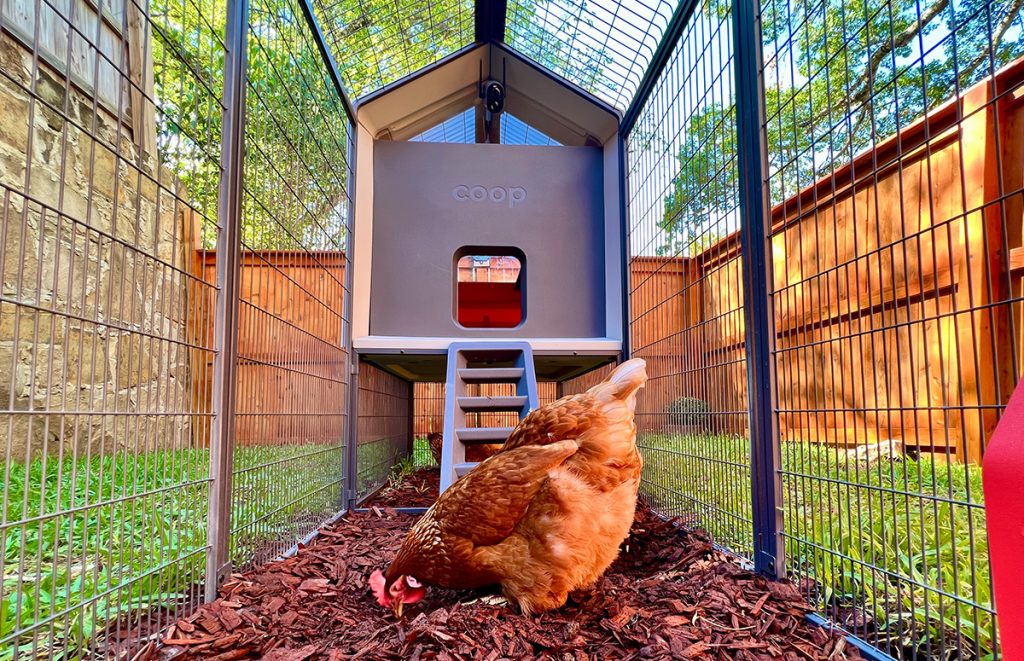
Best Features
The CoopCams are the real VIPs of this coop, with 1080P live video, night vision, two-way audio, and waterproof vibes. The predator detection game is strong, thanks to the seven million-image dataset.
The pre-installed automatic door with GPS programming and predator protection adds an extra layer of security. Plus, they run on rechargeable batteries for a year-long operation.
A sneak peek of the best features of the Smart Coop:
- CoopCams with advanced AI, night vision and two way audio
- Sturdy Construction: The coop itself is made of double-walled, recyclable plastic, while the run and base are constructed with heavy-duty, powder-coated, corrosion-resistant steel.
- Automatic Door with Smart Features: Pre-installed automatic door with light sensor, predator protection, and GPS programming.
- Smart Coop App: An intuitive app for 24/7 remote monitoring and control. Offers real-time coop montitoring.
- SOS mode: Activate a custom predator alarm combining loud dog barks and flashing lights
- Warranty: Backed by a 2-year full warranty
- Six Compostable litter trays
- Included detachable feeder and waterer
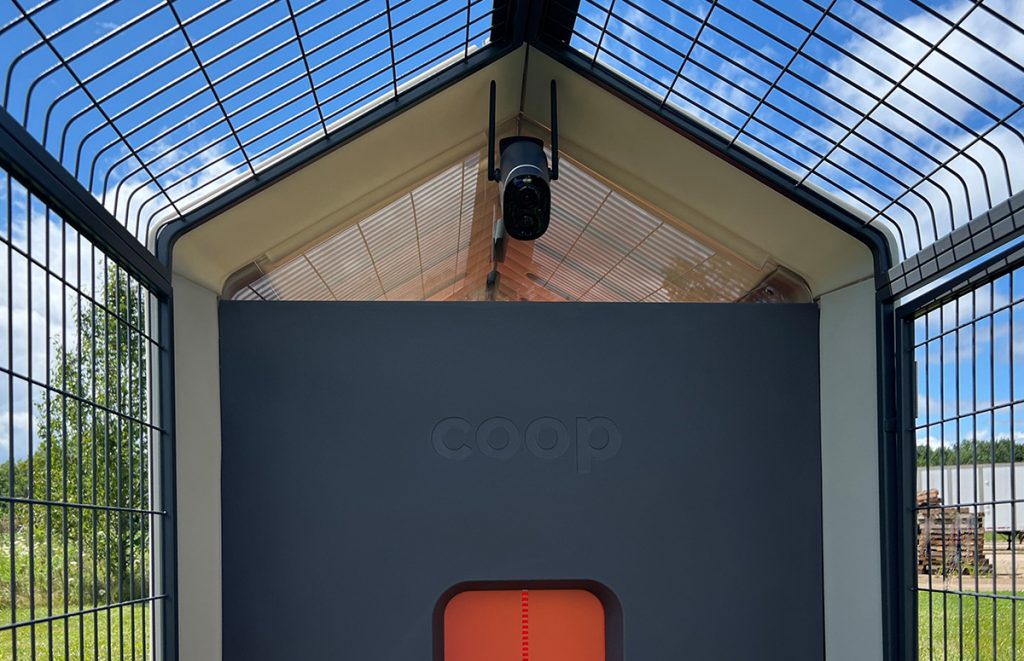
Potential Drawbacks
- Mandatory Subscription for Camera Activation: To keep the CoopCams active, a mandatory subscription fee of $7 per month during one year is required. While this fee supports the continuous use of advanced AI-powered cameras, it is a cost to factor into your budget.
- Initial Cost: Next to the mandatory subscription, the initial cost of the Smart Coop isn’t cheap, although many features are included in this price.
Bottom Line
The Smart Coop isn’t your average coop; it’s a deluxe retreat tailored for tech enthusiasts and chicken guardians. With its advanced CoopCams, AI predator detection, and a suite of smart features, this coop offers exceptional security for those with numerous predators lurking around or a constant need for chicken surveillance.
While its premium features come with a higher cost, the Smart Coop is a fusion of technology, delivering peace of mind, convenience, and top-tier protection.
If you seek a sturdy coop with cutting-edge innovation for your backyard flock, the Smart Coop embodies sophistication in chicken housing.
5. Non-Plastic-Non-Wooden Coop: Run-Chicken Villa
In this article about ‘Best Plastic Chicken Coops,’ there’s one standout that breaks the mold: The Run-Chicken Villa. Unlike its plastic counterparts, this coop is crafted from robust aluminum.
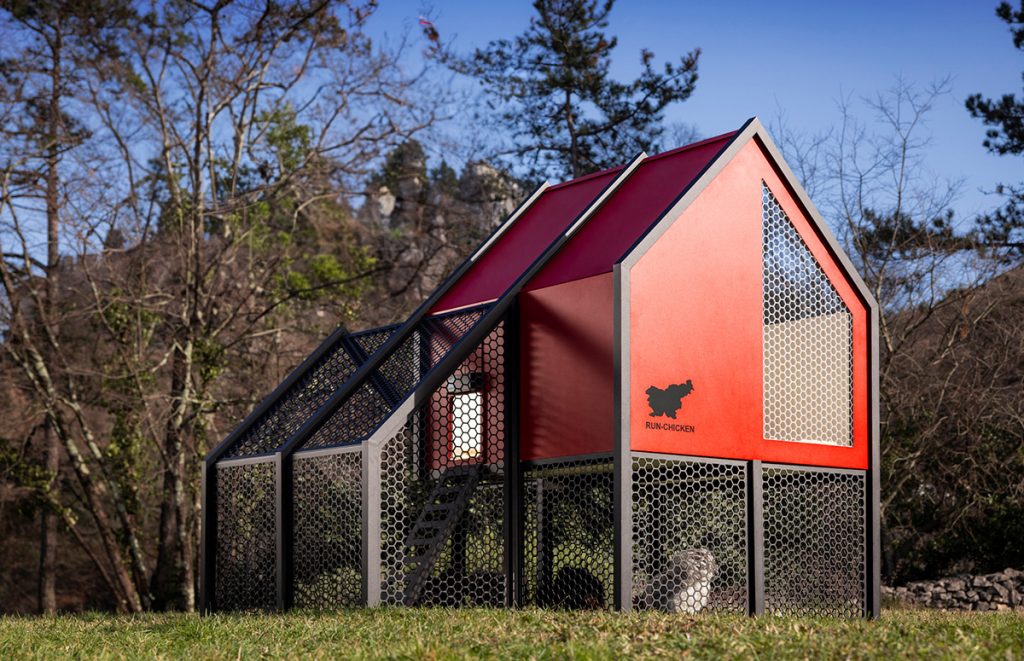
Recognized for its groundbreaking automatic coop doors and a range of top-quality chicken-keeping gear, Run Chicken has, for the first time, introduced a full-fledged chicken coop.
Naturally, our interest was piqued, and we couldn’t resist delving into what makes the Run-Chicken Villa stand out in poultry housing.
Click on the link below to get a 15% discount on your Run-Chicken Villa.
Overview
The Run Chicken Villa excels with a design that prioritizes space, comfort, and accessibility. Built with durable aluminum and roll-form EPS insulation panels, it offers exceptional weather resistance and easy maintenance.
The coop adapts to your flock’s needs, featuring modularity for future enhancements. This modularity is what sets the Villa apart from many other coops. This allows for easy upgrades and customizations to adapt to the evolving needs of your flock.
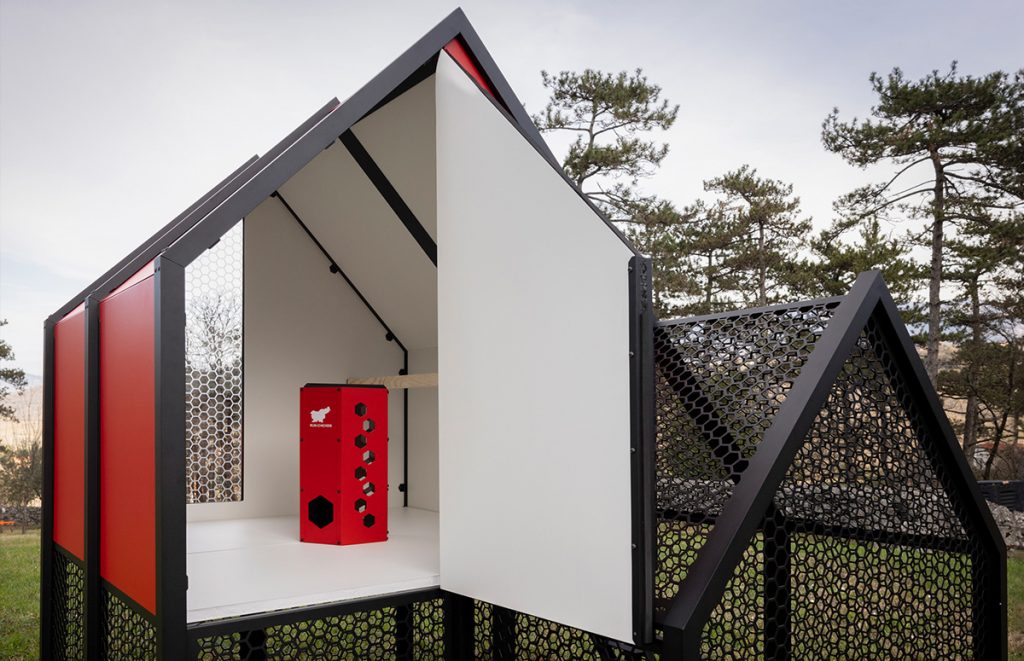
Next to that, one person can assemble the Run Chicken Villa in just an hour. The modular construction further facilitates cleaning, supporting high-pressure washing.
With dimensions of 48.80 inch x 48.80 inch x 71.65 inch and a weight of 148 lbs, the Villa can accommodate 6 – 8 chickens, suitable for various breeds.
Best Features
- Durable: Crafted from robust aluminum, the Villa ensures strength, weather resistance, and a modern aesthetic.
- Modularity: Designed with adaptability in mind.
- Climate Control: This includes roll-form EPS insulation panels, ensuring optimal conditions for chickens in winter and summer.
- Safety Features: A polycarbonate window with safety engraving allows natural light without the risk of collisions.
- Easy Maintenance: Modular construction enables cleaning with high-pressure washing.
- Automatic Door: Equipped with an automatic coop door.
- Other Inclusions: The Villa includes an indoor feeder and a nesting box.
Possible Drawbacks
- Material Weight: The sturdy aluminum construction, while durable, may result in a relatively heavy overall weight (approximately 147.71 pounds), potentially requiring careful consideration during setup or if mobility is a priority.
- Initial Cost: The quality and features of the Run-Chicken Villa come with a higher price, which is higher than other coop options in the market. But by using our Chickenfans link, you get 15% off on your purchase!
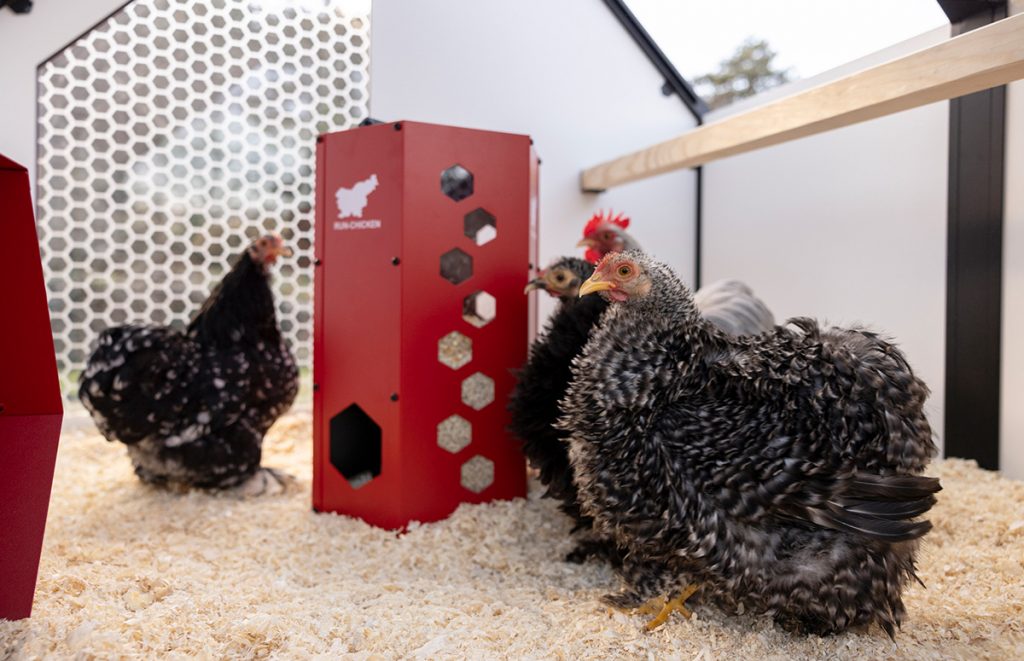
Bottom Line
The Run-Chicken Villa may cost a bit more but you’re getting a deluxe coop experience. If you’re already familiar with Run Chicken products, you know they deliver the goods.
This coop brings durability, cool features like climate control and modularity, and a slick design. It also includes an automatic coop door, an indoor feeder and a nesting box. Think of it as an investment in a cozy, top-quality home for your flock.
If you’re into quality and functionality, the Villa’s got your back. By clicking on the link below, you receive a 15% discount on your Run-Chicken Villa.
Plastic Coops Vs Wooden Coops
Chicken keepers increasingly opt for plastic coops instead of wooden ones because of the ease of cleaning. That said, wooden coops remain the most popular choice for those looking for the perfect house for their chickens.
Whether you’re new to chicken keeping or seeking a new enclosure for your birds, we’ll help you get started by addressing the main differences between plastic and wood for a chicken coop.
1. Ease of Cleaning
Plastic coops are easier to clean compared to wooden ones. Simply hose them down and use a stiff brush to remove stubborn droppings or mud. Plus, many plastic coops come with a removable droppings tray, simplifying the cleaning.
Unlike wood, plastic dries quickly, which is a big advantage during winter when wood can take hours to dry.
Additionally, ensuring biosecurity in and around the chicken coop is essential when raising chickens. Disinfecting a wooden coop can be challenging, but plastic coops can be washed down and treated with disinfectant, so you’ll know for sure the coop has been completely disinfected.
2. More Parasite-Proof
Plastic chicken coops are known to be more parasite-proof, making them less likely to suffer from red mites or other parasite infestations.
However, there are no chicken coops 100% parasite-proof, not even plastic ones. So why is a plastic coop better than a wooden coop?
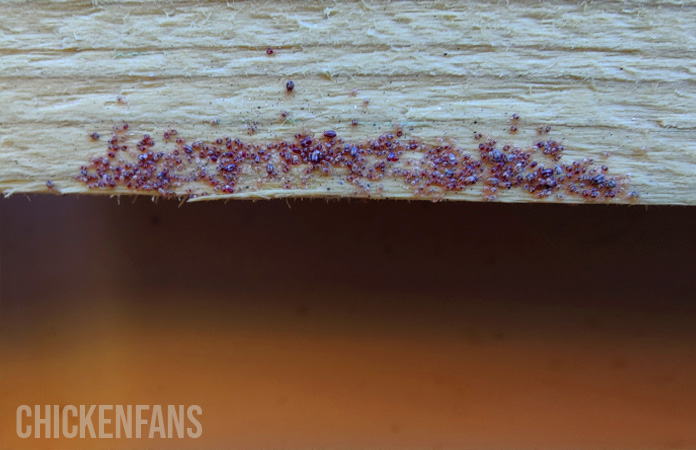
Firstly, plastic coops have fewer hiding places for red mites to reproduce compared to wooden coops of a similar size. Red mites hide during most of the day in the nooks and crannies of the chicken coop. The fewer hiding places, the less chance of finding your coop interesting.
Secondly, if red mites appear in a plastic coop, they can be easily washed away with a hose, while in wooden coops, they hide under the roofing and between the cracks, making them difficult to reach.
Keeping a wooden coop free of red mites can be expensive and time-consuming, as various treatments must be used frequently and are expensive, especially in the long run.
3. Mobility
Most plastic chicken coops are made from lightweight plastic and often come equipped with wheels, which makes them easy to move around. Whether you have a small backyard or want to move your chickens around for fresh grass, a portable chicken coop is very convenient.
While wooden coops with wheels are available, repeatedly moving a wooden coop can increase the risk of damage or wear and tear.
If you’re looking for a portable and mobile coop, it’s better to look for a plastic one instead of a wooden coop. Therefore, if portability is a priority for you, a plastic coop is a better option than a wooden one.
Check out our article on ‘Portable Chicken Coops‘ for more information.
4. Insulation
Plastic coops are typically made from recycled materials and offer excellent insulation. In winter, the coop’s ventilation helps maintain a temperature similar to that outside, although chickens are naturally tolerant to the cold thanks to their feathers’ insulation properties.
During summer, plastic coops with UV-resistant roofs effectively reflect the sun’s heat, keeping the birds comfortable and cool. However, regardless of the coop type, it’s crucial to provide shade to chickens if they are confined to a run.
Summary
Plastic chicken coops are gaining popularity each day due to their easy maintenance and high quality. They last longer than wooden coops, and some models are very eco-friendly. We also like to highlight other benefits of plastic coops, including ease of cleaning, superior insulation, and resistance to red mites.
There are plenty of models on the market, so you can be sure to find one that matches your needs.
If you want to learn more about chicken coops, please visit our ‘Coops‘ page.
Or, if you want to learn about automatic chicken coop doors: We’ve thoroughly tested many chicken coop doors and made a list of our Best Automatic chicken coop doors, including major brands like Omlet, ChickenGuard, Vevor, Happy Henhouse, Chickcozy, Vevor Premium and Run Chicken.
